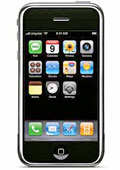|
The
internet is back! There's a buzz among entrepreneurs as venture
capital companies are putting money into companies focussed on
the Indian market. Online advertising (display, search and classifieds)
is growing. Users are starting to spend on transactions-going
beyond ticketing. All in all, the long-promised boom of the Indian
internet is underway. What needs to be done to ensure that the
boom isn't just a transient bubble?
There are, in reality, two internets-segmented
by the access device and the type of connectivity. The pc-based
wireline internet has about 45 million users, with a majority
of the users using cybercafes. With only 7 million computers in
Indian homes, this internet is still a long way from becoming
a utility in people's lives. The mobile-centric wireless internet
can potentially reach a significant portion of the 170 million
cell phone users in India. However, the reality is that other
than voice, there are only two services that touch a large fraction
of this user base-SMS and ringback tones. The mobile-as-India's-computer
paradigm still has a long way to go.
Looking at it another way, for the real boom,
the wireline internet needs more devices (home computers) and
the mobile internet needs more services. What will it take to
make both happen?
 To
solve the device problem, one needs to rethink computing in a
world where broadband exists and thus make computers affordable
and manageable. For this, the answers lie in borrowing two ideas
from the mobile industry-create a device that costs Rs 5,000,
and combine it with a monthly service charge of Rs 500, and make
the device simple to use without requiring its owner to become
a technology expert! To
solve the device problem, one needs to rethink computing in a
world where broadband exists and thus make computers affordable
and manageable. For this, the answers lie in borrowing two ideas
from the mobile industry-create a device that costs Rs 5,000,
and combine it with a monthly service charge of Rs 500, and make
the device simple to use without requiring its owner to become
a technology expert!
The solution to these twin challenges lies
in thinking 'thin' computers for Indian homes-connected over DSL
or cable to servers over high-speed networks. All the computational
processing is done at the server-end, and the network computers
become simple 'on-off' devices without compromising on the performance
that current desktop computers offer.
To make the mobile internet a reality in
India, two changes need to happen, and they have to be driven
by the mobile operators since they are the 'gatekeepers'. First,
an open publishing platform is needed to allow anyone to create
a mobile website that is accessible by everyone- just like on
the pc internet.
Second, mobile operators need to change their
billing philosophy for value-added services. The bulk of the revenue
that users pay must be given to the content providers. Mobile
operators should, instead, charge for packet data flow through
their 'pipes.' At a broader level, just like NTT DoCoMo did with
its i-mode service in Japan in 1999, Indian mobile operators need
to encourage the creation of a value-generating ecosystem.
Taken together, these innovations can help
build India's digital infrastructure, create a framework for other
emerging markets to emulate and provide a large domestic market
for companies to finally think India First. n
Rajesh Jain is Managing
Director, Netcore Solutions, based in Mumbai. He can be reached
at rajesh@netcore.co.in. His technology-centric blog is at http://emergic.org.
|






 To
solve the device problem, one needs to rethink computing in a
world where broadband exists and thus make computers affordable
and manageable. For this, the answers lie in borrowing two ideas
from the mobile industry-create a device that costs Rs 5,000,
and combine it with a monthly service charge of Rs 500, and make
the device simple to use without requiring its owner to become
a technology expert!
To
solve the device problem, one needs to rethink computing in a
world where broadband exists and thus make computers affordable
and manageable. For this, the answers lie in borrowing two ideas
from the mobile industry-create a device that costs Rs 5,000,
and combine it with a monthly service charge of Rs 500, and make
the device simple to use without requiring its owner to become
a technology expert!